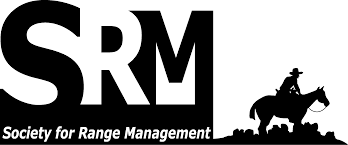Location
The Society for Range Management is the professional scientific society and conservation organization whose members are concerned with studying, conserving, managing and sustaining the varied resources of the rangelands which comprise nearly half the land in the world. Established in 1948, SRM has over 4,000 members in 48 countries, including many developing nations.
SRM’s members are land managers, scientists, educators, students, producers and conservationists–a diverse membership guided by a professional code of ethics and unified by a strong land ethic.
MISSION
Providing leadership for the Stewardship of Rangelands based on sound ecological principles.
VISION
A well-trained and highly motivated group of professionals and rangeland users working with productive, sustainable rangeland ecosystems.
Members:
Resources
Displaying 21 - 25 of 26Revolutionary Land Use Change in the 21st Century: Is (Rangeland) Science Relevant?
Rapidly increasing demand for food, fiber, and fuel together with new technologies and the mobility of global capital are driving revolutionary changes in land use throughout the world. Efforts to increase land productivity include conversion of millions of hectares of rangelands to crop production, including many marginal lands with low resistance and resilience to degradation. Sustaining the productivity of these lands requires careful land use planning and innovative management systems.
Economic and Social Impacts of Wildfires and Invasive Plants in American Deserts: Lessons From the Great Basin
Research on the impacts of wildfire and invasive plants in rangelands has focused on biophysical rather than human dimensions of these environmental processes. We offer a synthetic perspective on economic and social aspects of wildfire and invasive plants in American deserts, focusing on the Great Basin because greater research attention has been given to the effects of cheatgrass expansion than to other desert wildfire/invasion cycles.
New Rangeland Residents in Wyoming? A Survey of Exurban Landowners
Rapid conversion of rural land to exurban development and the ensuing impacts on natural resources have been well-documented, but information about exurban landowners is lacking. To address this knowledge gap, we surveyed exurban landowners in six Wyoming counties and documented demographic characteristics, motivations, knowledge, and attitudes about natural resources and land management. The overall response rate was 55.6%. Generally, respondents were of retirement age, had lived in Wyoming for about 13 yr, and were raised in areas with a population
Songbird Relationships to Shrub‐Steppe Ecological Site Characteristics
Rangeland managers are often faced with the complex challenge of managing sites for multiple uses and for the diverse interests of stakeholders. Standardized monitoring methods that can be used and understood by different agencies and stakeholders would aid management for long‐term sustainability of rangelands. In the United States, federal land management agencies have recently based their assessments of rangeland health and integrity on state‐and‐transition models to consider management trajectories.
Effects of Plant Secondary Compounds on Nutritional Carrying Capacity Estimates of a Browsing Ungulate
Carrying capacity estimates based on digestible protein (DP) and energy (DE) are useful in comparing effects of land management practices or the ability of different vegetation communities to support herbivores. Plant secondary compounds that negatively affect forage quality would be expected to change nutritionally based estimates of carrying capacity. We evaluated the effect of plant secondary compounds on nutritionally based carrying capacity estimates of white-tailed deer (Odocoileus virginianus Zimmerman) in Tamaulipan thorn scrub of northern Mexico.


